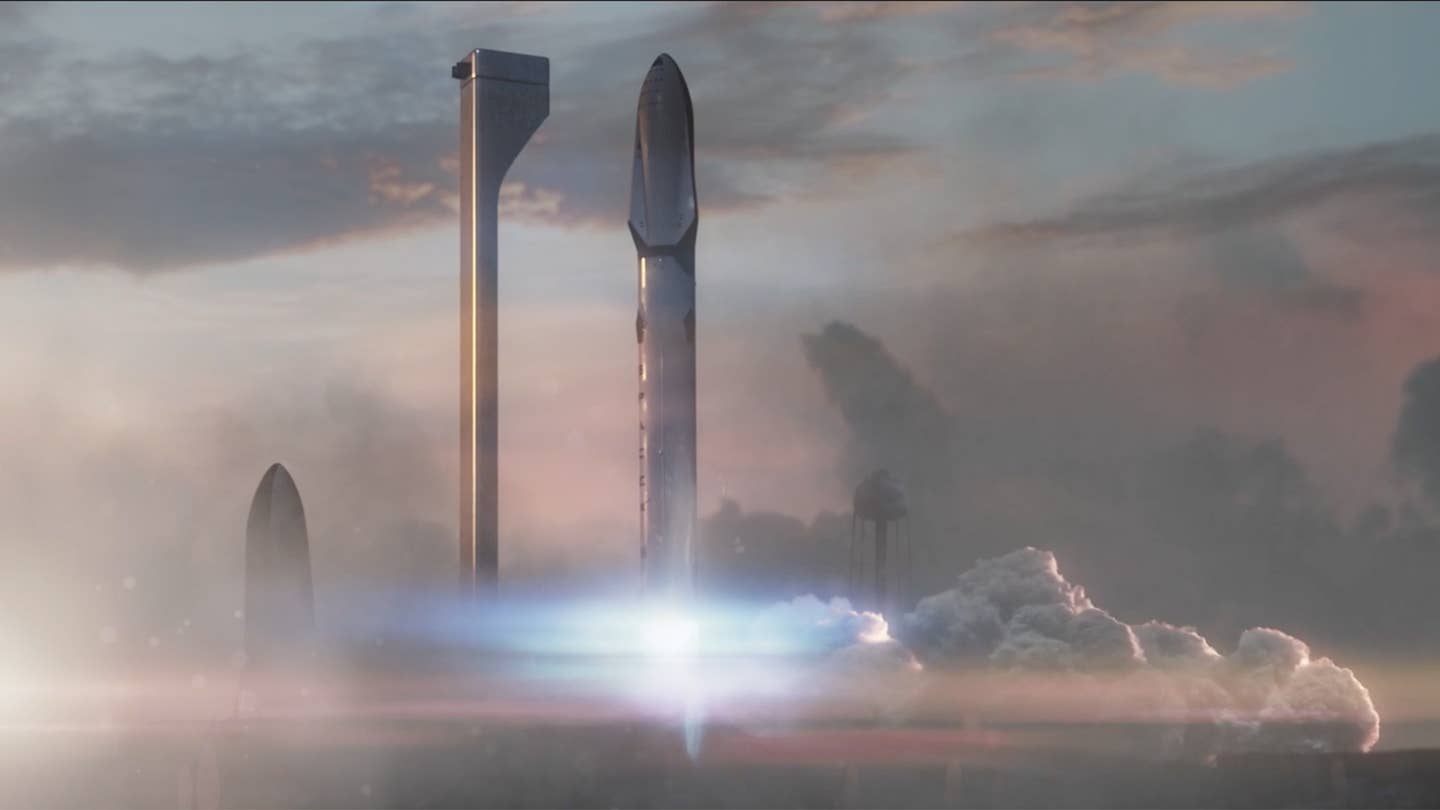Elon Musk Reveals SpaceX’s Incredible Mars Plans
One million people on the Red Planet in less than 100 years. Easy, no?

After months of anticipation, Elon Musk took the stage today to reveal the details behind SpaceX’s bold plan to put people on Mars—specifically, the 400-foot-tall rocket designed to send 100 people at a time into orbit.
Musk’s lengthy speech gave everyone a lot to digest, so we’ll just give you the major bullet points that’ll let you keep up with the conversation at the bar this evening:
The new Space X rocket is gigantic. The booster and ship combined will stretch more than 400 feet from nose to superheated tail, making it far bigger than a Saturn V. It will largely be made out of carbon fiber, and fueled by methane. (Methane, he points out, can be made on Mars, thus allowing the ships to leave the Red Planet.) The booster alone will use 42 Raptor rocket engines. And both stages will be reusable—indeed, Musk highlights reusability as a key component of making space travel affordable.
Going to Mars will be (somewhat) cheap. Currently, Musk says, it would cost around $10 billion per person to send people to Mars. SpaceX’s aim is to bring that cost down far enough so that a trip to Mars costs as much as or less than the median price of an American home. (In 2016, that’s about $188,000.)
The space ships will be pretty sweet. At a little more than 150 feet long and about 50 feet across at the widest spot, the Mars shuttles might seem like cramped accommodations for 100 people, since the average trip time will be around 115 days—and much of the interior will be dedicated to cargo and fuel. Nevertheless, Musk says the ships will have rooms for zero-g activities, places to watch movies, even maybe a restaurant.
Colonization is going to take a while. Even with around 100 people on each space ship, it’ll still take a lot of trips to create Musk’s self-sustaining city. The SpaceX head honcho said he expects Mars will need at least one million people in order to support itself without help from the third rock from the Sun. Musk suggests populating the Red Planet will take between 40 and 100 years, with fleets of spaceships leaving en masse every two years or so when the planets are closest.
Mars is just the beginning. The basic components of the system, Musk says, could enable humans to travel to pretty much any part of the solar system—from the moons of Jupiter to Venus to the distant reaches of the icy Oort cloud.
SpaceX has released the entire speech and follow-up Q&A session on YouTube; we’ve embedded it below, but at just shy of two hours long, we won’t judge you if you skip it. However, you should make sure to watch the first video, which shows the basics of SpaceX’s plan; it’s the sort of thing sure to set any space-loving nerd’s heart a-flutter.


